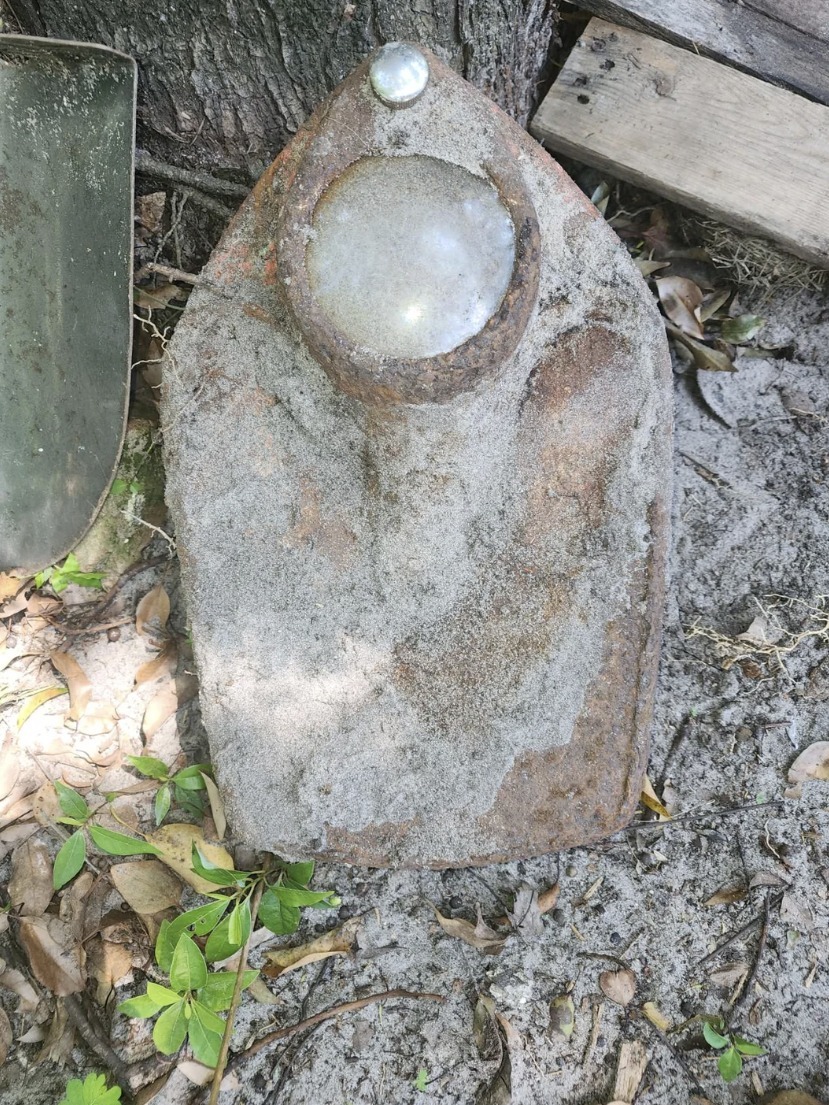ADVERTISEMENT
### **Possibility #4: A Cultural or Religious Artifact**
Given its unusual structure and the materials involved, the object could potentially be a cultural or religious artifact. Different cultures throughout history have utilized symbolic objects that are both visually striking and meaningful.
– **Symbolic Use of Metal and Glass**: Both metal and glass have symbolic meanings in many cultures. Metal often represents strength, durability, and the physical world, while glass can symbolize fragility, transparency, or spirituality. The combination of these materials could carry a deep symbolic message, especially if the object was used in religious or ceremonial contexts.
– **Religious Significance**: In some cultures, metal and glass are used to create sacred objects or talismans. For example, in Hinduism, glass and metal are often used in the creation of offerings or ritual items, while certain types of glass beads are found in African and Native American religious ceremonies.
If the object is indeed religious or cultural, understanding its specific context could help uncover its purpose. It may have been part of a ceremonial process, or it could be a stand-alone artifact meant to symbolize a belief or story.
—
### **Possibility #5: An Invention or Prototype**
It’s also possible that the object was an early prototype or concept for an invention. The combination of metal and glass, as well as its unusual form, could indicate that it was part of an early design for a machine or device.
– **Unfinished Prototype**: Many inventors create prototypes that don’t serve a specific function right away. Perhaps this object was an early version of a tool or mechanism that was later refined or modified. It could have been an experiment with design, materials, or engineering.
– **Unusual Invention**: The object might also represent a device that was intended to work in a specific way but never achieved functional success. Some objects are designed with intricate mechanisms or parts that don’t always meet expectations in practice.
While there is no moving or mechanical part in this particular object, it’s still worth considering that it could have been a part of a larger, more complex invention.
—
### **Steps for Further Investigation**
If you’ve found such an object or are intrigued by similar discoveries, there are several steps you can take to investigate further and potentially identify its purpose or origin:
1. **Consulting Experts**: Seek out specialists in history, art, or archaeology to provide insight into the object. Museum curators, historians, or collectors may have knowledge about similar items.
2. **Researching Materials**: Look closely at the materials used in the object. Understanding the composition of the metal and glass might give you clues as to its age, origin, and function. Some materials are distinctive and can be traced to specific regions or time periods.
3. **Online Communities**: Reddit and other online forums are great places to connect with people who may have encountered similar items. Posting clear pictures and descriptions may attract responses from others with expertise or experience.
4. **Testing the Object**: If you’re comfortable, consider taking the object to a professional for testing. For example, a metallurgist could analyze the metal, or a glass expert could determine whether the bead is hand-blown or machine-made.
5. **Contextual Research**: Explore the area where the object was found. Local history, geology, and cultural practices can all provide important context for understanding the object’s origin and purpose.
—
### **Conclusion**
The mystery surrounding the object found in Florida—18 inches tall, metal with a glass bead, heavy, and silent—has sparked curiosity and intrigue among Redditors and those interested in unusual artifacts. While there is no definitive answer yet, we can make educated guesses based on the materials, structure, and features of the object.
Whether it turns out to be a decorative art piece, architectural element, vintage object, religious artifact, or an invention prototype, the process of investigating such mysterious finds is part of the allure. By connecting the dots between material culture, historical context, and scientific analysis, we can uncover the hidden stories behind the objects that shape our world.
If you come across such an object, remember: every find has a story waiting to be told. It’s just a matter of discovering its place in history.
